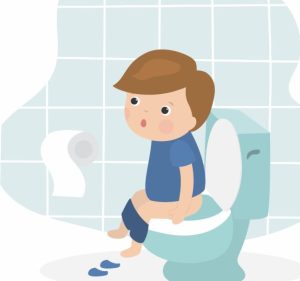How do I toilet train my child? It’s time for the first instalment of Rimjhim’s Toileting Blog Series – a 4 part blog that will take us through until the end of Term 4 2022. This Blog will focus on Physical Skills, Sensory Processing, It’s not just Toileting and Communication. A key developmental aspect of a child’s development, toilet training is one of our major activities of daily living.
Childworks Occupational Therapy – Toilet Blog Series – Part 1
It’s Not Just Toileting: Part 1 – An Overview of the Skills Required During Toilet Training
If you’re asking yourself “How do I toilet train my child?” – read on. A key developmental aspect of a child’s development, toilet training is one of our major activities of daily living. We hear multiple accounts of difficulties parents and preschools encounter when trying to toilet train their children.
Let’s start by changing our traditional thoughts – toilet training isn’t just toilet training, and there are several skills and physiological actions that all need to work together for a child to become independent when using the bathroom.
Below are just some of the skills required during the entire toileting process – some of these, such as wiping accurately, develop as a toddler becomes a little older.
Physical Skills
- Having sufficient core strength, balance, and muscle tone to sit on a potty or toilet
- Physical strength to flush and dress/undress
- Motor planning to dress/undress and wipe
- Internal muscles of the bowels and bladder working adequately
- Awareness of their body parts
- The ability to reach the necessary parts of their body and items around them
Sensory Processing
- Internal awareness of the urge to pass urine or stools
- Awareness of soiled or wet nappy
- Tolerance of numerous environmental factors – examples include:
- Smell of a bathroom, including unpleasant smells or even of bathroom products
- Smell of urine/stools,
- Sound of the flush and plumbing sounds
- Sound of hand dryers
- The feel of the toilet seat/potty
- The feel of skin with and without clothing
- The feel of urine/stools passing
- Awareness of when the toileting task is complete
- Self-regulation to respond to external and internal cues during the entire process, so they can toilet in a hygienic and safe manner
Communication
- Being able to communicate when they have soiled or when they need to use the toilet
- An understanding of the concept of toileting and the need to toilet, including the steps involved
- Following instructions, either verbal or visual, when being supported by an adult to toilet train
- Being able to ask for help if needed
If you find that your child is struggling with any of the steps of toileting, an occupational therapist can complete an interview and task analysis to help you break down some of the difficulties and work with you to come up with some strategies to overcome these.
Stay tuned for more in the series over the coming weeks.



Recent Comments